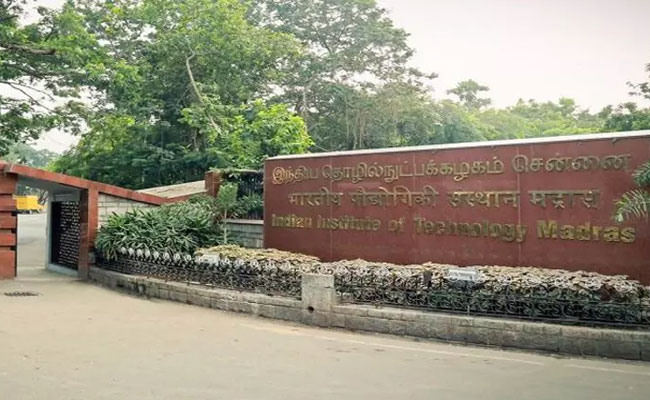IIT Madras & THSTI Faridabad Researchers develop the first India-specific AI model to determine the age of the foetus

CHENNAI, 26thFebruary 2024:Researchers at Indian Institute of Technology Madras(IIT Madras) and Translational Health Science and Technology Institute (THSTI), Faridabad, as part of ‘Interdisciplinary Group for Advanced Research on Birth Outcomes – DBT India Initiative’ (GARBH-Ini) program,have developed the first India-specific Artificial Intelligence (AI) model to determine the age of a foetus in a pregnant woman in the second and third trimesters precisely.
Accurate ‘Gestational Age’ (GA) is necessary for the appropriate care of pregnant women and for determining precise delivery dates.Called ‘Garbhini-GA2’, this is the first late-trimester GA estimation model to be developed and validated using Indian population data.
Also Read:
The most important benefits of this GAmodel include
Ø Currently, the age of a foetus (‘Gestational Age’ or GA) is determined using a formula developed for Western population
Ø They are likely to be erroneous when applied in the later part of pregnancy due to variations in the growth of the foetus in the Indian population
Ø The newly developed ‘Garbhini-GA2’ accurately estimates the age of a foetus for the Indian population, reducing error by almost three times.
Ø This GA model can improve the care delivered by obstetricians and neonatologists, thus reducing maternal and infant mortality rates in India.
Welcoming this research, Dr. Rajesh Gokhale, Secretary, Department of Biotechnology (DBT), Government of India, said,“GARBH-Ini is a flagship programme of DBT, and the development of these population-specific models for estimating gestational age is a commendable outcome. These models are being validated across the country.”
This research was undertaken by Dr.Himanshu Sinha, Associate Professor, Bhupat and Jyoti Mehta School of Biosciences, Department of Biotechnology, IIT Madras, Dr.ShinjiniBhatnagar, the Principal Investigator of GARBH-Ini programme and a distinguished professor at Translational Health Science and Technology Institute (THSTI),(See below for complete list of authors) and other researchers. The findings were published in the prestigious international peer-reviewed journal Lancet Regional Health Southeast Asia(DOI: 10.1016/j.lansea.2024.100362)
The BRIC-THSTI is an institute under the Biotechnology Research and Innovation Council (BRIC), Department of Biotechnology, Ministry of Science and Technology, Government of India. The institute acts as a catalyst to translate fundamental discoveries by building rigorous clinical research capacity and enabling faster transition of discoveries from bench to bedside.
Highlighting the importance of this study, Dr Himanshu Sinha, who is also a Coordinator at the Center for Integrative Biology and Systems Medicine, IIT Madras, and who led the data science work for this research, said,“IIT Madras has been contributing towards solving healthcare problems at the grassroots and local level with the aim of enhancing public health in India. To this end, working with our clinical partner, THSTI, we are utilising advanced data science and AI/ML techniques to build tools to predict unfavourable birth outcomes. The first step towards this is to develop accurate GA models that perform significantly better than currently used models designed using Western populations.”
Elaborating further, Dr ShinjiniBhatnagar, Principal Investigator of the GARBH-Ini programme and a Distinguished Professor, Translational Health Science and Technology Institute (THSTI), said, “Improving the GA accuracy is a critical component of the broader goals of the GARBH-Ini study, which aims to reduce the adverse pregnancy outcomes. The mere application of sophisticated data science tools is not sufficient. The crux of ensuring that these technological advancements yield tangible benefits in the clinical realm lies in the end-to-end partnership between clinicians and data scientists. Such collaboration ensures that the development of solutions is not only technically sound but also clinically relevant and seamlessly integrated into healthcare workflows. This study is an exemplar of this approach.”
Ultrasound dating in early pregnancy is the standard of care for determining GA. However, dating based on formulae developed with Western data, particularly in the second and third trimesters, tends to be less accurate in the Indian population due to the variations in foetal growth.
The researchers used genetic algorithm-based methods to develop Garbhini-GA2, which, when applied in the second and third trimesters of pregnancy, was more accurate than the current Hadlock and recent INTERGROWTH-21st models. The Garbhini-GA2 model, compared to Hadlock, reduces the GA estimation median error by more than three times.
Garbhini-GA2 used three routinely measured foetal ultrasound parameters, was developed using GARBH-Ini cohort data documented at Gurugram Civil Hospital, Haryana, and was validated in an independent cohort in South India. Application of Indian population-specific GA formulae with better accuracy can potentially improve pregnancy care, leading to better outcomes. This accurate dating will also enhance the precision of epidemiological estimates for pregnancy outcomes in the country.
Once validated in prospective pan-India cohorts, this Garbhini-GA2 can be deployed in clinics across India, improving the care delivered by obstetricians and neonatologists, thus reducing maternal and infant mortality rates in India.
This study was conducted in partnership with Gurugram Civil Hospital, Gurugram, Safdarjung Hospital, New Delhi, Christian Medical College Vellore, and Pondicherry Institute of Medical Sciences, Puducherry. The GARBH-Ini program is a flagship programme of the Department of Biotechnology (DBT), Govt of India. The GA model-building research was funded by the Grand Challenges India program of the Biotechnology Industry Research Assistance Council, DBT, Government of India.
Additional funding came from the Robert Bosch Centre for Data Science and Artificial Intelligence (RBCDSAI), IIT Madras and the Centre for Integrative Biology and Systems Medicine (IBSE), IIT Madras.
















